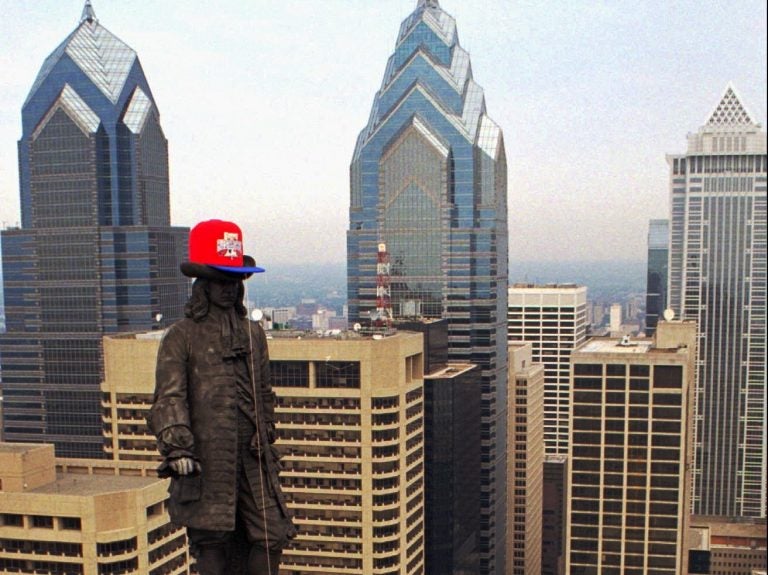Why the ‘curse of Billy Penn’ still looms large for many Philadelphians
Where did the "curse" come from and why was it so emblematic of Philadelphia — its traditions, culture, and insecurities?
Listen 14:20
The Alexander Milne Calder statue of William Penn wears an All Star Game ball cap after it's installation early Friday morning, June 28, 1996, high over Philadelphia's City Hall. The 100-pound cap, 7 feet long and 4 feet high, was raised in preparation for the game to be played July 9. (AP Photo/ George Widman)
The construction of the One Liberty Place skyscraper in the 1980s broke a so-called gentleman’s agreement that no one build taller than the statue of William Penn on top of Philadelphia City Hall. That ushered in the “curse of Billy Penn,” thought to explain the failure of the city’s sports teams. Why was that “curse” so emblematic of Philadelphia — its traditions, culture, and insecurities? Former Pa. Gov. Ed Rendell and Temple University history professor Kenneth Finkel explain on this episode of The Why.
WHYY is your source for fact-based, in-depth journalism and information. As a nonprofit organization, we rely on financial support from readers like you. Please give today.






